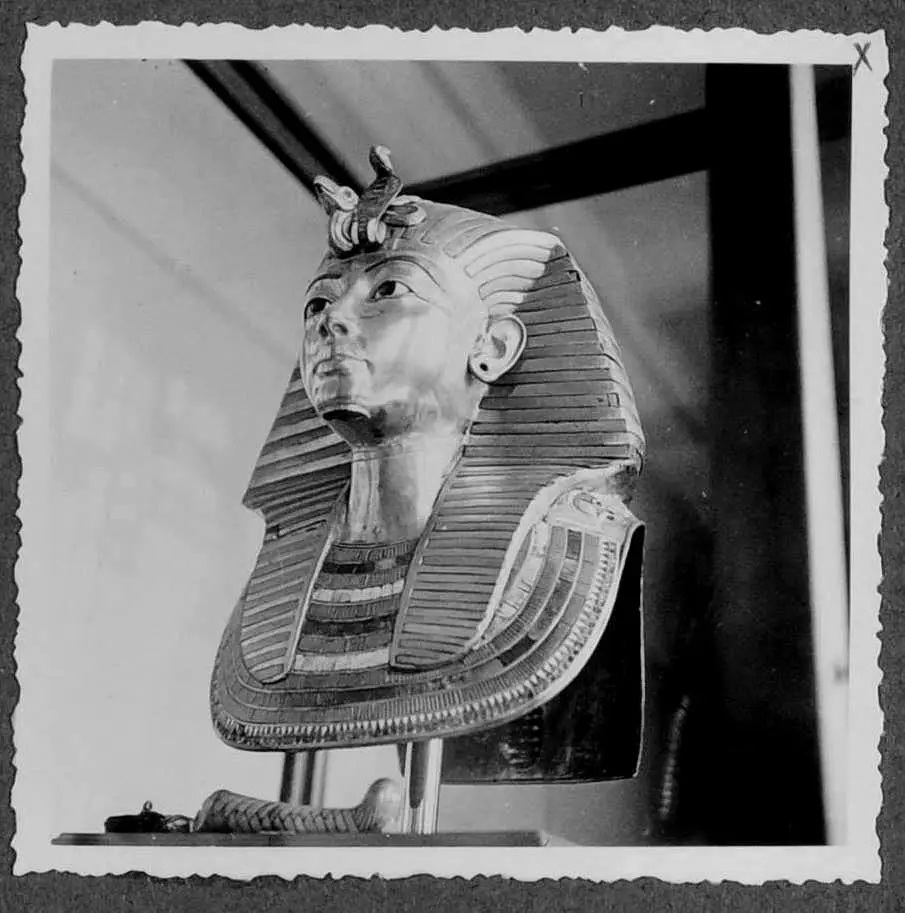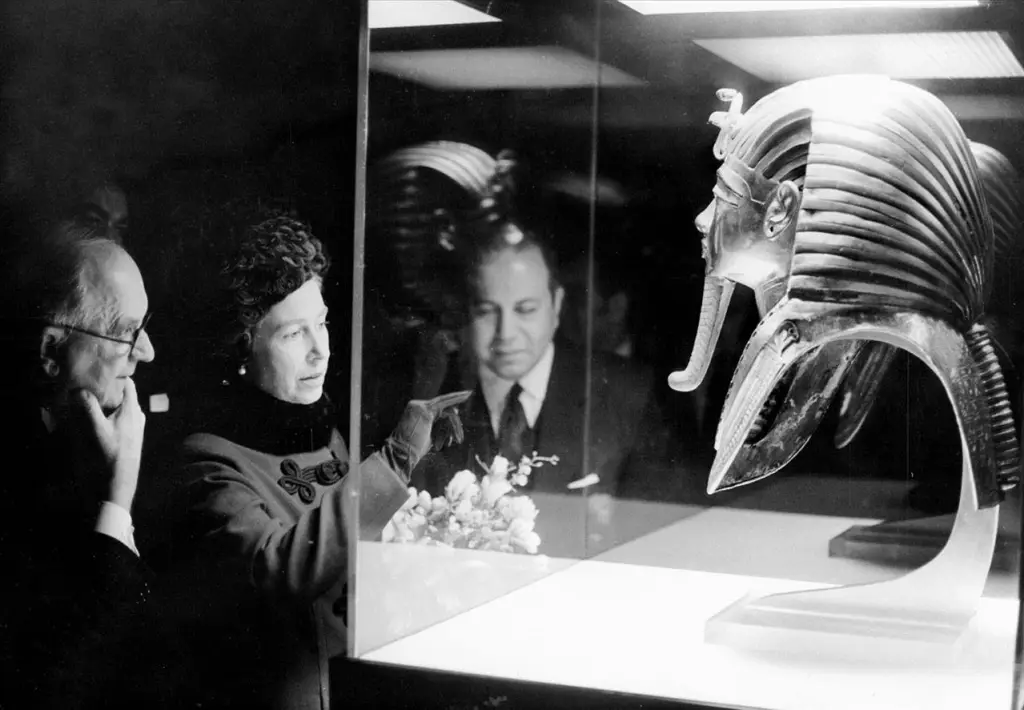The gold funerary mask of Tutankhamun stands as a testament to the pinnacle of artistic and technical achievements of the ancient Egyptians during the New Kingdom. The mask’s precise depiction of the king’s facial features enabled his soul to recognize and return to his mummified body, thus ensuring his resurrection.
The back of the Golden Mask of Tutankhamun
Undisputedly, most valuable artifact on the planet. Mask of the young Egyptian King Tutankhamun (r. 1332-1323 BC), from New Kingdom (18th Dynasty).

Undisputedly, most valuable artifact on the planet. Mask of the young Egyptian King Tutankhamun (r. 1332-1323 BC), from New Kingdom (18th Dynasty).
Discovery and Significance
Buried for over 3,000 years, the mask was unearthed by Howard Carter in 1925 from tomb KV62 in the Valley of the Kings. The mask, covering the head of the wrapped mummy in its coffin, was empowered by a magical spell, no. 151b from the Book of the Dead, to provide further protection for the king’s body. Adorning his brow is the kingly uraeus, a combination of the Wadjet (rearing cobra, representing Lower Egypt) and the vulture Nekhbet (representing Upper Egypt). This amalgamation symbolizes the king’s domination over both lands, mirroring the message of control depicted in the Narmer Palette.

Death Masks in Ancient Egypt
Ancient Egyptian funerary practices were intricate, designed to ensure immortality after death. Death masks, such as the magnificent gold mask of Tutankhamun, were crafted to cover the faces of mummies, ensuring the spirit could recognize its body. From the Middle Kingdom (1938-1630 BC) to the 1st century CE, stylized masks with generalized features were placed on the faces of the deceased. These masks guided the spirit back to its final resting place in the body.

Divine Protection and Symbolism
The back of Tutankhamun’s gold mask is adorned with extracts from chapter 151B of the Book of the Dead. This chapter identifies each facial feature with a god to provide comprehensive divine protection. The inscriptions assure the deceased of guidance and protection in the afterlife, as seen in the poetic description of various parts of the mask symbolizing different deities and their attributes.
Historical Discovery
The discovery of Tutankhamun’s tomb by Howard Carter in 1922, exactly 100 years after Jean-François Champollion deciphered ancient Egypt’s hieroglyphs, was a historic coincidence. Champollion’s breakthrough unlocked the rich written archives of the civilization, while Carter’s find provided an unaltered glimpse of pharaonic wealth.

When Carter first peered inside the tomb on November 26, 1922, the sight of golden objects illuminated by candlelight revealed the splendor of the young king’s burial treasures. This tomb, soon to be the most famous discovery in ancient Egyptian history, contained the mask among other significant artifacts.
The Mask’s True Origins
Recent analyses by Egyptologist Nicholas Reeves suggest that the face section of Tutankhamun’s mask, representing an idealized portrait of the young king, may have replaced an earlier one. This implies that the mask might originally have belonged to someone else, most likely King Neferneferuaten, possibly the famous Queen Nefertiti ruling as king. Evidence shows that some of Neferneferuaten’s funerary goods were repurposed for Tutankhamun, including a cartouche on the mask altered from Neferneferuaten’s name to Tutankhamun’s.
Carter’s Reflection and Exhibition
Howard Carter expressed astonishment at the artistic productivity found in the tomb, noting that Tutankhamun’s tastes seemed more in line with an average young nobleman than a royal prince. The discovery included domestic objects and treasures, providing a unique insight into the life and personality of the relatively obscure king.

The gold mask and other artifacts from the tomb were displayed in international exhibitions, including one opened by Queen Elizabeth II at the British Museum in 1972. This exhibition marked the 50th anniversary of the tomb’s discovery and attracted 1.6 million visitors, showcasing the enduring fascination with Tutankhamun and his treasures.
The Mask Today
Currently, the mask of Tutankhamun is displayed on the upper floor of the Egyptian Museum in Tahrir Square, Cairo, and is slated to be transferred to the new Grand Egyptian Museum (GEM). The mask, weighing 22.5 pounds (10.23 kg), is constructed of two sheets of gold joined by heating and hammering. It features inlays of obsidian, quartz, and lapis lazuli, and a broad collar of semi-precious stones and colored glass.
Artistic and Historical Legacy
The mask of Tutankhamun is a masterpiece of ancient Egyptian craftsmanship, illustrating exceptional skill and artistry. Its discovery provided profound insights into ancient burial practices, religious beliefs, and artistic achievements, highlighting the opulence and cultural significance of the New Kingdom period. The mask remains a symbol of the power, divinity, and legacy of King Tutankhamun, capturing the imagination and admiration of people worldwide.



